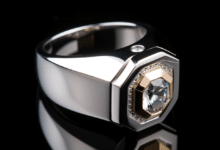7 Essential Questions to Ask Before Insuring Your Ring

Insuring your ring is a crucial decision that should not be taken lightly. Whether it’s an engagement ring, wedding band, or treasured family heirloom, these precious pieces hold immense sentimental and monetary value. To ensure your ring is adequately protected, it’s essential to ask the right questions before securing a policy. In this comprehensive guide, we’ll explore seven essential questions to help you navigate the intricacies of ring insurance, empowering you to make an informed decision.
1. What is the Value of Your Ring?
To accurately insure your ring, you must first determine its value. This process typically involves obtaining an appraisal from a reputable jeweler or gemologist. The appraisal should provide detailed information about the ring’s components, such as the type of metal, gemstone(s), carat weight, color, clarity, and cut. Additionally, it should include a replacement value, which is the amount it would cost to replace the ring with a similar piece. Knowing the precise value of your ring is crucial, as it will determine the appropriate level of coverage and the premium you’ll pay for the insurance.
2. What Type of Coverage Do You Need?
Depending on your specific needs and preferences, there are different types of coverage to consider for your ring:
- Replacement Value Coverage: This type of coverage ensures that you’ll receive the full replacement value of your ring if it’s lost, stolen, or damaged beyond repair. It’s often the most comprehensive and recommended option.
- Actual Cash Value Coverage: With this coverage, you’ll receive the ring’s current market value, which takes into account depreciation and wear and tear. This option is typically less expensive but may not provide sufficient coverage for valuable or sentimental pieces.
- Additional Coverage Options: Some policies may offer additional coverage options, such as protection against accidental damage, loss of center stone, or damage caused by natural disasters or civil unrest.
3. What Deductibles and Limits Apply?
Most insurance policies come with deductibles and coverage limits that you should be aware of. A deductible is the amount you’ll have to pay out-of-pocket before your insurance kicks in, while coverage limits represent the maximum amount the insurance company will pay out for a claim. It’s essential to understand these terms and ensure they align with your needs and budget. Higher deductibles typically result in lower premiums, but you’ll have to weigh the potential savings against the risk of having to pay more out-of-pocket in case of a claim.
4. What is the Insurance Company’s Claims Process?
Before choosing an insurance provider, it’s crucial to understand their claims process. Inquire about the steps involved in filing a claim, the documentation required, and the typical timeframe for processing and settling claims. A reputable insurance company should have a straightforward and transparent claims process, making it easier for you to navigate the system in the event of a loss or damage.
5. Are There Any Exclusions or Limitations?
Most insurance policies have certain exclusions or limitations that you should be aware of. For example, some policies may exclude coverage for damage caused by negligence or wear and tear, while others might have limitations on coverage for certain types of gemstones or settings. It’s essential to review the policy’s fine print carefully and understand any exclusions or limitations that could potentially impact your coverage.
6. Can You Insure Your Ring Through Existing Policies?
Before securing a separate ring insurance policy, it’s worth exploring if your existing homeowner’s or renter’s insurance policy provides any coverage for valuable items like jewelry. Some policies may offer limited coverage or the ability to add a rider or endorsement for additional protection. However, it’s crucial to understand the scope of coverage and any limitations or deductibles that apply.
7. How Often Should You Review Your Coverage?
It’s essential to review your ring insurance coverage periodically to ensure it remains adequate and up-to-date. Significant life events, such as marriage, divorce, or inheritance, may necessitate adjustments to your coverage. Additionally, if the value of your ring has increased due to market fluctuations or other factors, you may need to update your coverage to reflect its current worth. Experts recommend reviewing your policy annually or whenever there’s a significant change in circumstances.
By thoroughly understanding these seven essential questions, you’ll be better equipped to navigate the process of insuring your ring. Remember, your ring is not only a valuable asset but also a cherished symbol of love, commitment, and family legacy. Ensuring it’s properly protected will provide you with peace of mind and safeguard your investment for years to come.












